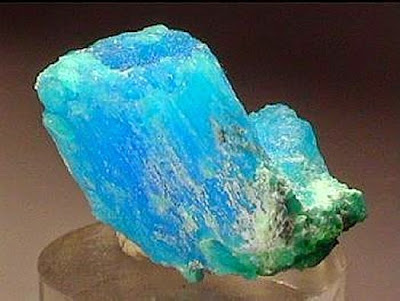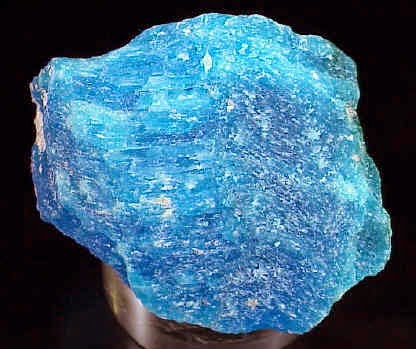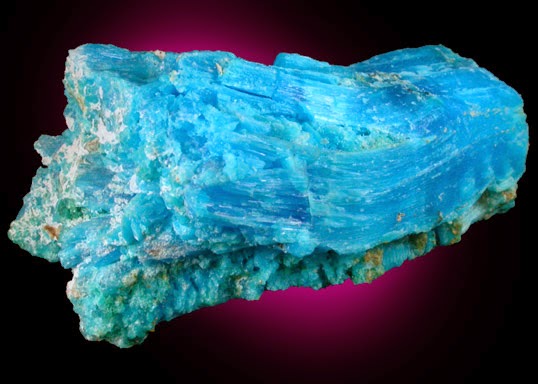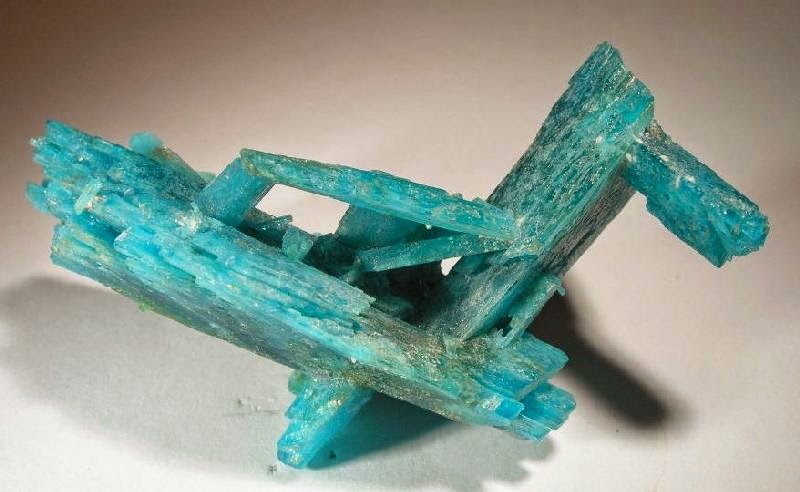
Chemical Formula: Na2Cu(SO4)2·2H2O
Locality: Chuquicamata, Calama, Antofagásta Province, Chile.
Name Origin: Named after B. Kroehnke, who was the first person to analyze it.
Kröhnkite ( Na2Cu(SO4)2·2H2O ) is a rare copper sulfate mineral named after B. Kröhnke who first researched it.
Discovery and occurrence
Kröhnkite was first researched after an occurrence in the Chuquicamata Mine, Chile, and has been reported from a number of locations in the Atacama region. Associated minerals in the discovery location include; atacamite, blodite, chalcanthite, antlerite and natrochalcite. It occurs in the oxidized zone of copper deposits in arid environments.
History
Discovery date : 1876
Town of Origin : CHUQUICAMATA, ANTOFAGASTA
Country of Origin: CHILE
Physical Properties
Cleavage: {010} Perfect, {011} Good
Color: Blue, Dark sky blue, Greenish blue, Yellowish green.
Density: 2.06 – 2.9, Average = 2.48
Diaphaneity: Transparent to Translucent
Fracture: Conchoidal – Fractures developed in brittle materials characterized by smoothly curving surfaces, (e.g. quartz).
Hardness: 2.5-3 – Finger Nail-Calcite
Luster: Vitreous (Glassy)
Streak: white
Photos :













